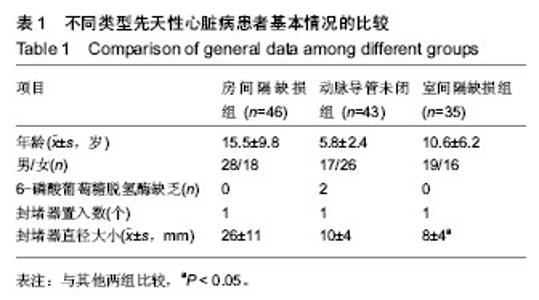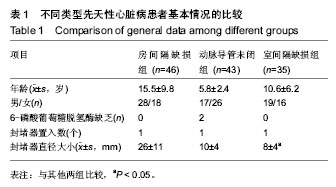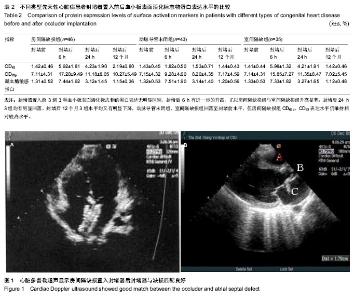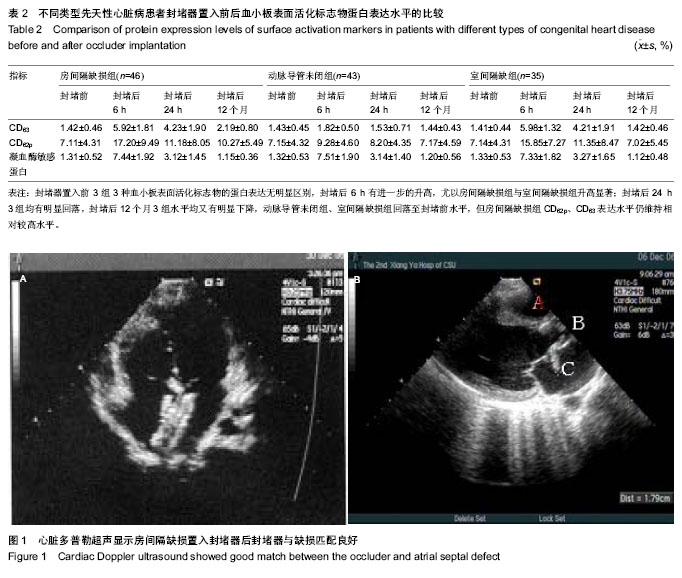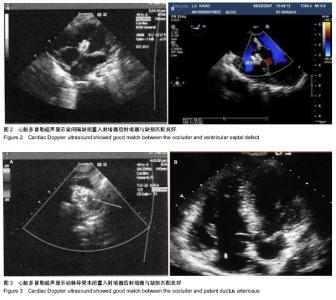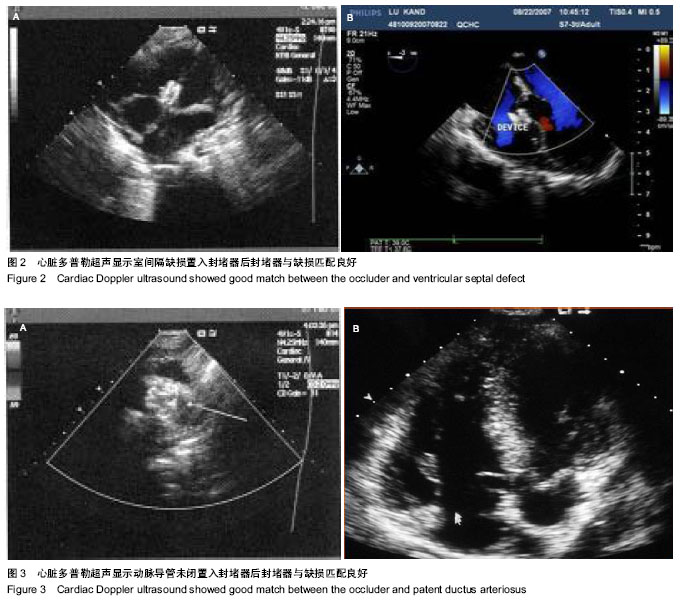| [1] Rashkind WJ,Miller WW.Creation of an atrial septal defect without thoracotomy. JAMA.1966;196(11):991-992.
[2] 王广义,王峙峰,郭军,等.经导管介入封堵老年继发孔型房间隔缺损[J].心脏杂志,2004,16(专刊):S71-S72.
[3] Sarris GE,Kirvassilis G,Zavaropoulos P,et al.Surgery for complications of trans-catheter closure of atrial septal defects: a multi-institutional study from the European Congenital Heart Surgeons Association.European Journal of Cardio-Thoracic Surg.2010;37(6):1285-1290.
[4] Prsa M,Ewert P.Transcatheter closure of a patent ductus arteriosus in a preterm infant with an Amplatzer Vascular Plug IV device.Catheter Cardiovasc Interv.2011;77(1):108-111.
[5] 谭大伟,朱平,李小鹰.氯吡格雷抑制血小板功能的两种检测方法比较:血小板聚集实验与血小板膜糖蛋白检测[J].中国组织工程研究与临床康复,2007,11(11):2021-2024.
[6] 曾秋棠,毛晓波.先天性心脏病介入治疗的现状[J].临床心血管病志,2006,22(5):257- 258.
[7] 高宏,蔡振杰.婴儿先天性心脏病125例外科治疗[J].临床和实验医学杂志,2011,10(2):99-100.
[8] 谢周良,苑星,杨志远.先天性心脏病三种体外循环手术美容切口的比较[J].实用儿科临床杂志,2002,17(5):510-511.
[9] 郑林琼,张伟华,鲁一兵,等.动脉导管未闭封堵术后血小板减少10例临床分析[J].中国介入心脏病学杂志,2012,21(5):275-277.
[10] Hamrick SEG,Hansmann G.Patent ductus arteriosus of the preterm infant. Pediatrics.2010;125(5):1020-1030.
[11] 刘俊香,刘燕,翟怀鸿.超声心动图在先天性心脏病封堵术中的应用11 例分析[J].中国误诊学杂志,2009,9(19):4763-4764.
[12] 王志远,金梅.Amplatzer与国产封堵器经皮介入治疗室间隔缺损的临床应用现状[J].心肺血管病杂志,2010,29(1):77-79.
[13] 张贵,张德元,何伶俐,等.纳米结构Ti/TiN涂层对NiTi合金生物相容性的影响[J].现代生物医学进展,2009,9(13):2465-2468.
[14] 张晓群,郭泰,芦芳.彩色多普勒血流显像技术评价先天性心脏病介入封堵术前后心脏形态及功能变化[J].临床医药实践,2010, 19(8):570-572.
[15] Thanopoulos BV,Eleftherakis N,Tzannos K,et al.Further experience with catheter closure of patent ductus arteriosus using the new Amplatzer duct occluder in children.Am J Cardiol. 2010;105(7):1005-1009.
[16] 谢绍峰,赖昀掞,朱恒青,等.国产封堵器封堵治疗先天性心脏病106例[J].中国组织工程研究与临床康复,2009,13(17):3285- 3288.
[17] 卢竞前,吕云,李易.与动脉导管未闭介入封堵相关的血小板减少症三例临床分析[J].中国介入心脏病学杂志,2010,18(5):299- 300.
[18] 吴顺芬,陈刚.小儿先天性心脏病的治疗进展:国产封堵器的应用及评价[J].中国组织工程研究与临床康复,2009,13(35):6907- 6910.
[19] 许愿愿,张伟华,左明鲜,等.先天性心脏病介入治疗855例临床疗效分析[J].昆明医学院学报,2010,31(8):131-133.
[20] 陈世忠,张林潮.国产封堵器介入治疗先天性心脏病80例[J].实用心电学杂志,2009,18(2):128-130.
[21] 胡楝,钟志敏,钟焕清,等.应用Amplatzer封堵器介入治疗继发孔房间隔缺损199例疗效观察[J].广东医学院学报,2011,29(1):65.
[22] 张黄健.介入治疗先天性心脏病52例临床分析[J].中外医疗, 2009, 28(8):36.
[23] 郝金玲,王育林.经胸超声指导封堵器介入治疗先心病24例分析[J].中国厂矿医学,2009,22(1):62.
[24] 韩琼.介入封堵治疗在先天性心脏病的应用[J].医学信息(上旬刊), 2011,24(7):4689-4690.
[25] 郭维琼,钱维源,安平,等.超声协助介入封堵治疗先天性心脏病4例[J].东南国防医药,2009,11(3):245-246.
[26] 方臻飞,李丽,沈向前,等.生物陶瓷膜先天性心脏病封堵器与普通镍钛合金封堵器的比较:随机对照[J].中国组织工程研究与临床康复,2011,15(34):6296-6301.
[27] 万金香.经胸超声心动图在ASD、VSD、PDA介入封堵中的应用[J].现代医药卫生,2009,25(8):1154-1155.
[28] 孙厉文,冯俊,常凤玲.心脏彩超监测及评价先心病介入治疗的应用价值[J].中国实用医药,2010,5(35):29-30.
[29] 张云涛,郭立新,金敬琳.介入封堵在治疗室间隔缺损修补术后残余漏上的疗效[J].心脏杂志,2013,6(1):57-59. |
